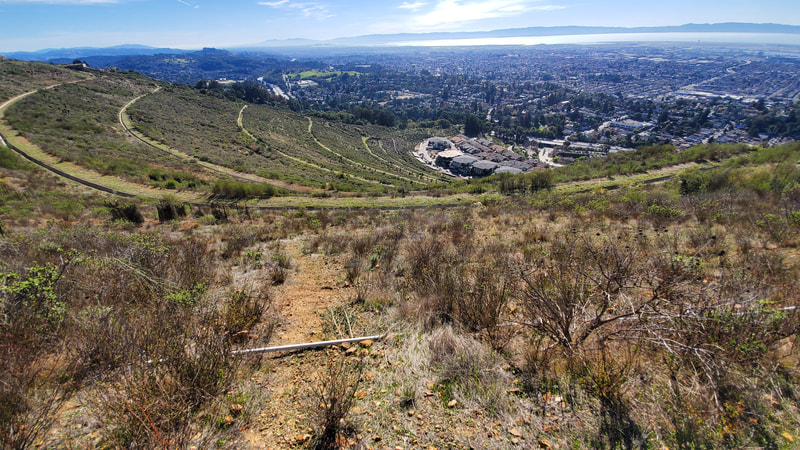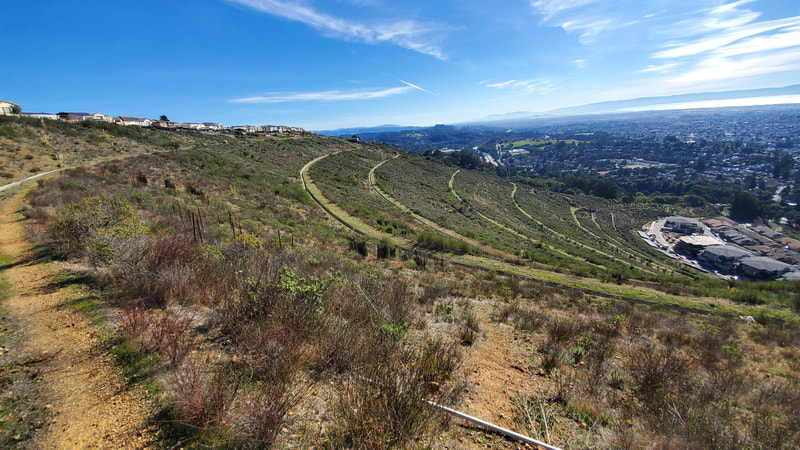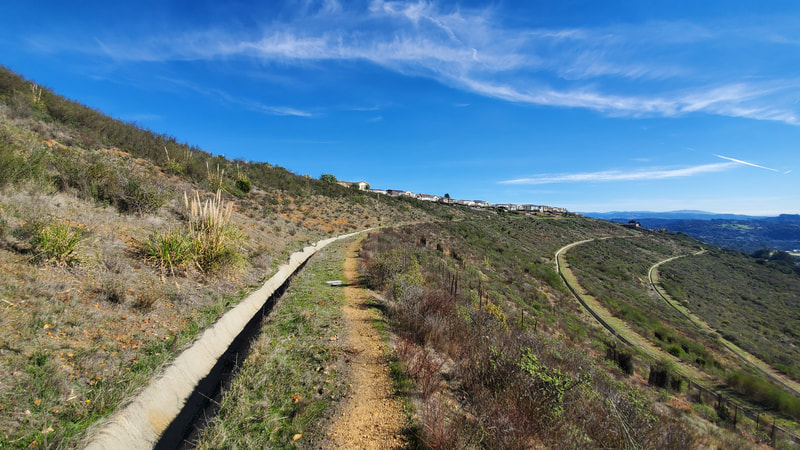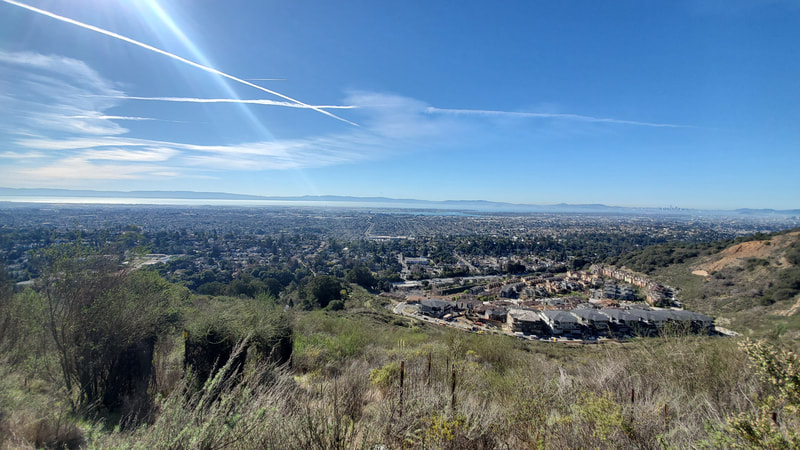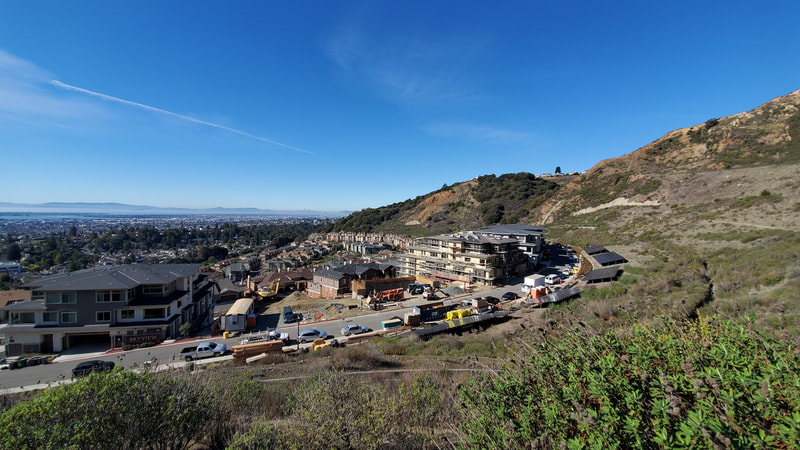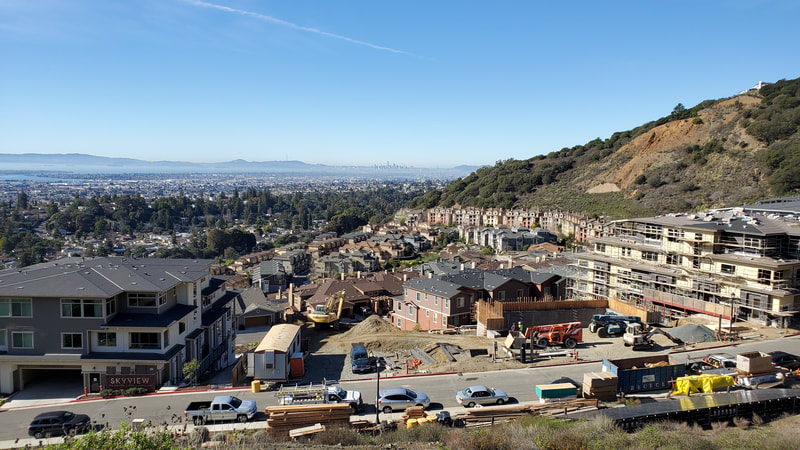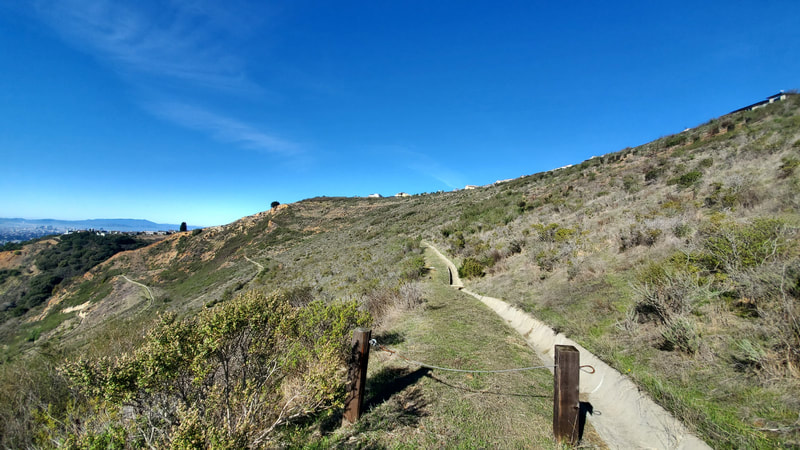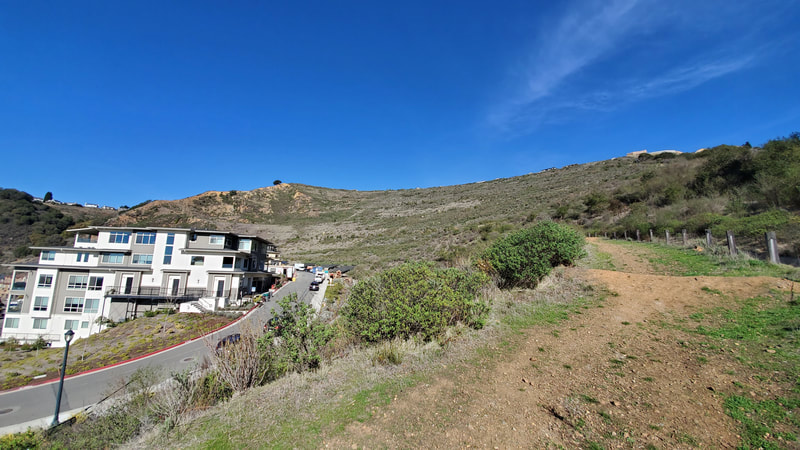|
This second blog post is all about
enhancing my audience's understanding of my topic by showing off some
non-textual sources of information. I've got a few here. Let's check
them out.
First up, a gallery of photographs of the Leona
Quarry. Some of them were shot looking up at the quarry. Others were
shot from atop the quarry, looking down and out. Rather than waste time
listening to me describe its appearance, its geographic location, its
current conditions, and the state of the land redevelopment occurring
above and below it, just check out these photos I snapped of it. If you
pay close attention, you can ascertain a lot of information just by
inspecting these photos. For example, the view of the San Francisco Bay
and the Oakland Airport air tower in the first photograph tell you
exactly where the quarry is and where it faces. And you can clearly
understand its size and scale from the photos, as well as get a feel for
the kind of housing development occurring on the land below it. I'll
leave the rest to you.
Next up, the trailer to the 2004 documentary
"Straight Outta Hunters Point" by San Franciscan filmmaker and former
Hunters Point resident Kevin Epps. I haven't seen the full documentary
itself yet, but the trailer alone is a pretty useful non-textual source
of information. It's got an old, crunchy, 2000's vibe to it, with its
4:3 aspect ratio and bedroom-produced hip-hop backing instrumental. It
features a narrator talking about the history of Bayview-Hunters Point,
shows you what the neighborhood looks like, and sets the stage for the
issues plaguing the community today. The long drive-by shot at the end
shows us the site of the Hunters Point Naval Shipyard, a redevelopment
site that is one of my main foci.
And finally, a site plan for the Leona Quarry. If I were allowed four multimodal sources on this blog post instead of just three, I would've uploaded a site plan for the Hunters Point Shipyard too. But I've only got room for three. Anyway, this site plan highlights the enormity of the quarry, something that's always good to remind ourselves of. The compass arrow and scale in the bottom left help us get our bearings on this whole thing. However, the site plan also makes the quarry's surroundings clear. From the looks of it, it appears that some sort of apartment complex or townhouse community is being built below the quarry, and a row of large single-family houses is being built above. And most crucially, the site plan shows us that the neighboring land is filled with dozens to hundreds of homes on all sides. The quarry is right in the middle of densely-packed residential land. This is really important to consider, since the people who live adjacent to the land undergoing redevelopment are going to impact what happens with the land. Before I let you go, there are a couple terms on that site plan that might be unfamiliar. I'll explain them here. A GHAD, or geologic hazard abatement district, is an organization that manages a potentially geologically hazardous site (such as, say, a site prone to landslides, like a former quarry) and does maintenance and upkeep. A parcel is a tract of land. Parcels not offered for GHAD maintenance are tracts of land that are privately owned and/or do not carry much inherent geological risk.
2 Comments
Nathan Liu
2/7/2021 11:30:41 pm
Hi Raymond. First of all, I really like what you did with your website so far. It really reflects the topic that you chose to write about. I see how you narrowed your topic down to Just the Leona Quarry/Hunter's Point, which is fascinating because I have been around those areas in San Francisco a few times myself. I liked the pictures that you provided because it depicts a visual representation of what it looks like right now. The pictures allow me to try to put myself in the shoes of the people who live there, and see for myself what it is like as a resident. The trailer was also a really cool multi modal element because it gives us the history and story behind the area, and how it became so impoverished. The blueprint/map for the location was also really helpful because it shows what is planned to re-urbanize the place.
Reply
test
2/10/2021 01:16:49 pm
test comment to see if i successfully changed the font color of the comment section for people typing comments without messing anything else up
Reply
|
sup
Posts about my writing process go here. |
